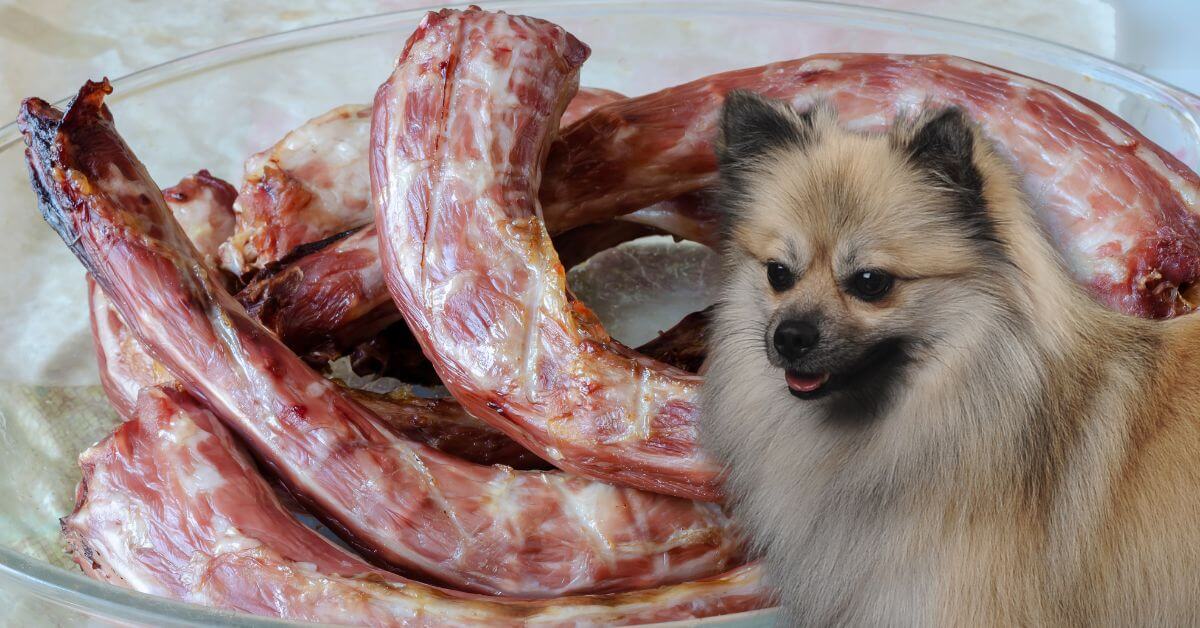Can Dogs Eat Turkey Necks?
Of all turkey bones, turkey necks are the safest option, but they also come with a risk. Turkey necks are raw, meaty bones made of soft, pliable bones and turkey meat. Specifically, turkey necks are made of roughly 40% bone and 60% muscle meat, making them a good chewy dog treat. However, many vets don’t recommend poultry necks at all, as there are certain risks associated with bacteria and infection. However, there’s a way to include them in your dog’s diet, but please talk to your vet to see if it’s worth the risk.

In a previous article, we covered the topic of turkey bones in-depth, but in this one, we’ll review specific cases where people give their dogs turkey necks, including the potential benefits and risks. The goal of this article is to provide safety tips, so even if you do decide to give your dog turkey neck, you are safe, and you know what to do.
Why turkey necks can be safe for dogs
Cooked turkey necks are very dangerous for dogs. High temperature breaks bones into hard, glass-like structures, and dogs can break and splinter as they chew on them. These small splinters can cause serious damage. Never give your dog cooked bones!
On the other hand, raw, freeze-dried, or dehydrated poultry bones are considered safe treats for dogs. Unlike cooked poultry bones, their texture is quite soft and brittle. When dogs chew on raw bones, they can crush them but not break them into shards. This is particularly true for turkey and chicken bones, where the bones have connective tissue and meat. Some of the best bones for chewing include chicken feet, chicken necks, duck feet, duck necks, and turkey necks. While they have nutritional benefits, they also come with a risk of bacteria.
Nutritional and other benefits of turkey necks for dogs
Turkey necks are a very popular treat for dogs, and for good reason. Here are some of the key benefits:
Risks and what you need to know about turkey necks
While turkey necks offer many benefits for dogs, a lot of vets and dog nutritionists will tell you they are quite dangerous. We think you should make an informed decision but understand the following risks:
While turkey necks can be a nutritious treat for your dog, you must know the risks. Always stay with your dog when they are eating bones and choose the appropriate size. Consult your vet if you have any concerns or if your dog has specific health conditions that might be affected by eating bones.
The best ways to give dogs turkey necks and safety tips
If you follow safety protocols, feeding your dog turkey necks is possible. If your vet approves, you can try to give your dog a raw or frozen turkey neck. This will help them clean their teeth and give them a fun chewing activity. Here are the essential safety tips to keep in mind:
This way, you can safely add turkey necks to your dog’s diet and give them a nutritious and enjoyable treat. All in all, turkey necks can be a good chewing treat for your dogs, as they do have nutritional benefits. However, you have to be aware of the risks. Always choose the right size, supervise feeding, and call your vet if you’re unsure.
Love, life, and fur forever!
FAQs
Can dogs eat raw turkey necks?
Yes, dogs can eat raw turkey necks. They provide high-quality protein, essential minerals, and natural sources of glucosamine and chondroitin. However, always supervise your dog while they’re eating and ensure the neck is the right size to prevent choking and blockages.
Can dogs eat smoked turkey necks?
It’s best to avoid giving dogs smoked turkey necks. The smoking process often involves added salt and seasonings, which can be harmful to dogs. Additionally, the texture of smoked bones can become harder and more brittle, increasing the risk of splintering.
Can dogs eat cooked turkey necks?
No, dogs should not eat cooked turkey necks. Cooking makes the bones hard and brittle, which can cause them to splinter and lead to choking or internal injuries. Always opt for raw, freeze-dried, or dehydrated turkey necks instead.